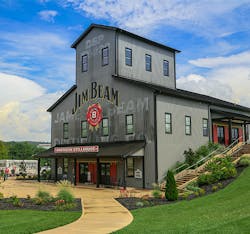3 Rivers Energy Partners to Transform Jim Beam Distillery Byproduct into RNG and Fertilizer
3 Rivers Energy Partners has introduced a sustainability project where its facility in Boston, Kentucky will utilize anaerobic digesters to process spent distillers grains from Beam Suntory’s adjacent Booker Noe Distillery, which produces Jim Beam, to generate renewable natural gas (RNG) to power the distillery.
The project will help the Booker Noe Distillery to replace 65% of its current conventional energy sources with RNG, thereby reducing its greenhouse gas emissions. The digesters will produce a high-quality, low-cost fertilizer for local farmers to replenish cropland.
The anaerobic digester will reduce the distillery’s greenhouse gas emissions by 50% and support regenerative agricultural practices, once completed. It is expected to produce up to 1.3 million MMBtu of RNG annually from spent grain.
“Our goal is to help Beam Suntory create a sustainable future for their company and the planet,” said John Rivers, CEO of 3 Rivers Energy Partners. “With this process, we can reduce greenhouse gas emissions, create new renewable energy, and help contribute to the agriculture needed to create their products. It is truly a full circle sustainability approach.”
About the Author
EnergyTech Staff
Rod Walton is head of content for EnergyTech.com. He has spent 17 years covering the energy industry as a newspaper and trade journalist.
Walton formerly was energy writer and business editor at the Tulsa World. Later, he spent six years covering the electricity power sector for Pennwell and Clarion Events. He joined Endeavor and EnergyTech in November 2021.
He can be reached at [email protected].
EnergyTech is focused on the mission critical and large-scale energy users and their sustainability and resiliency goals. These include the commercial and industrial sectors, as well as the military, universities, data centers and microgrids.
Many large-scale energy users such as Fortune 500 companies, and mission-critical users such as military bases, universities, healthcare facilities, public safety and data centers, shifting their energy priorities to reach net-zero carbon goals within the coming decades. These include plans for renewable energy power purchase agreements, but also on-site resiliency projects such as microgrids, combined heat and power, rooftop solar, energy storage, digitalization and building efficiency upgrades.
